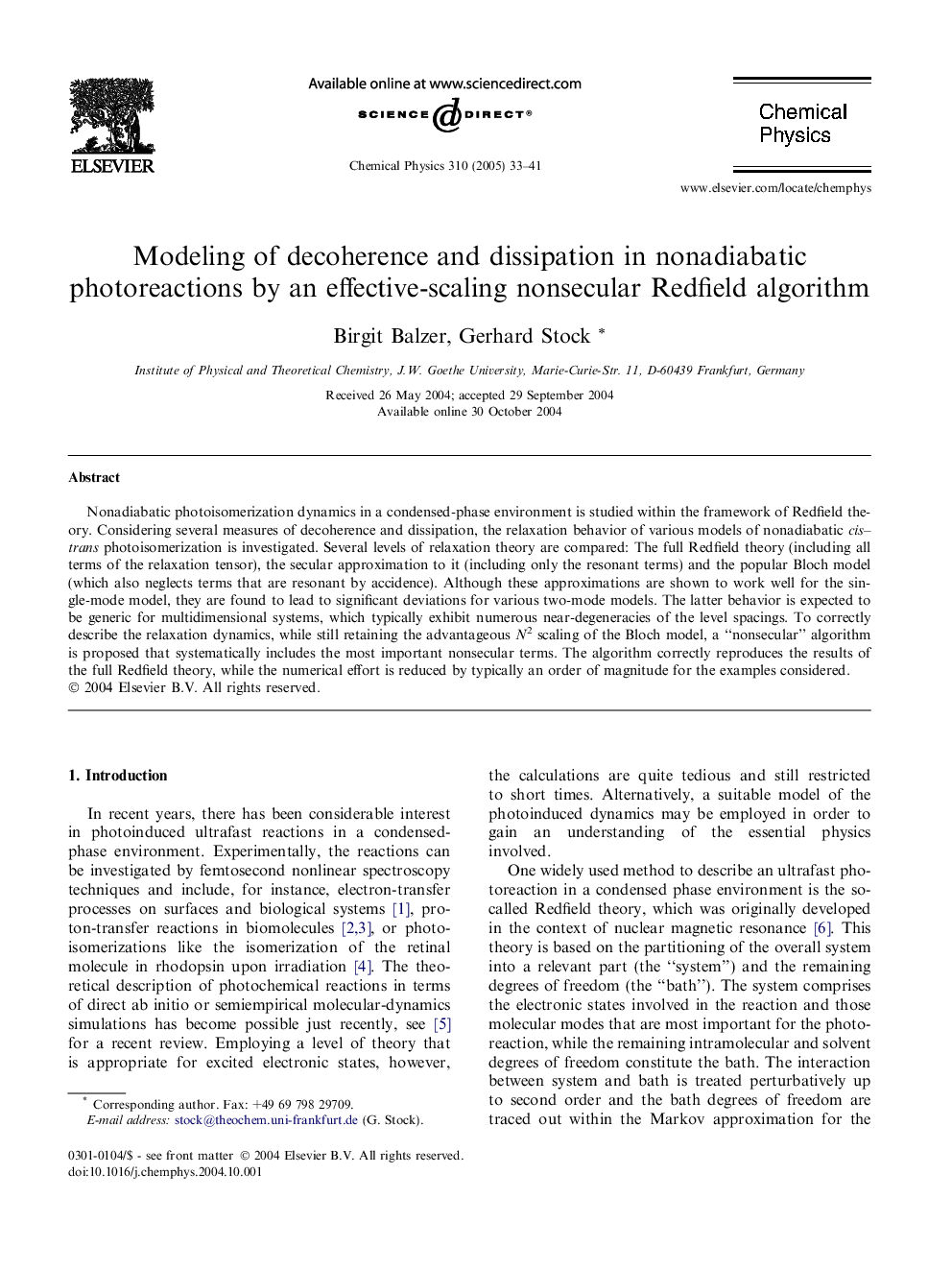| Article ID | Journal | Published Year | Pages | File Type |
|---|---|---|---|---|
| 9575441 | Chemical Physics | 2005 | 9 Pages |
Abstract
Nonadiabatic photoisomerization dynamics in a condensed-phase environment is studied within the framework of Redfield theory. Considering several measures of decoherence and dissipation, the relaxation behavior of various models of nonadiabatic cis-trans photoisomerization is investigated. Several levels of relaxation theory are compared: The full Redfield theory (including all terms of the relaxation tensor), the secular approximation to it (including only the resonant terms) and the popular Bloch model (which also neglects terms that are resonant by accidence). Although these approximations are shown to work well for the single-mode model, they are found to lead to significant deviations for various two-mode models. The latter behavior is expected to be generic for multidimensional systems, which typically exhibit numerous near-degeneracies of the level spacings. To correctly describe the relaxation dynamics, while still retaining the advantageous N2 scaling of the Bloch model, a “nonsecular” algorithm is proposed that systematically includes the most important nonsecular terms. The algorithm correctly reproduces the results of the full Redfield theory, while the numerical effort is reduced by typically an order of magnitude for the examples considered.
Related Topics
Physical Sciences and Engineering
Chemistry
Physical and Theoretical Chemistry
Authors
Birgit Balzer, Gerhard Stock,
